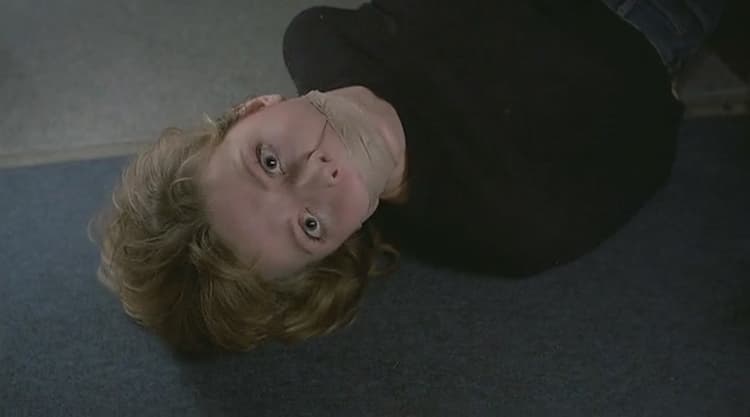- Home
-
Games
-
Movies & TV
-
Videos
- Comics & Books
- Podcasts
- Store
- Who We Are
- ---
- Login
- Account
- Our Circle
- Contact Us
- ---
- WANT TO CONTRIBUTE?
- Privacy Policy
- Terms of Service

Do you ever come across something that sounds so disturbing you vow never to watch it but watch it eventually? It frequently happens to me with varying results. One such instance is an Austrian film called Angst (English translation, appropriately enough: Fear). It is directed by Gerald Kargl and is somewhat based on serial killer Werner Kniesek. The resulting movie is just as chilling.
A man known as K (Erwin Leder, one gutsy actor) gets out of prison. He gets the urge to kill not long after. After a few failed attempts, K escapes arrest and breaks into a suburban house. There, he finds a mother (Edith Rosset), her daughter (Silvia Ryder), and her wheelchair-using son (Rudolf Götz). What happens to the family next is not pretty. The events are gruesome, and they feel ripped from the headlines, which is what the filmmakers intended. Heck, if I were to write about what the family goes through, I’d alienate even my toughest readers. By the time the movie wraps up, you will need a shower or two.
If there’s anything essential to remember from Angst, it’s the camerawork. Despite the movie being four decades old, sometimes I mistook it for a more modern-day one. That is how well this movie has aged. Camerawork can make or break a film, and Angst has several examples. First, the viewer sees the killer’s POV during the house scenes. With a movie as well-executed as this one, it almost makes you feel as if you are the murderer. Peeping Tom was the first movie to do this technique, but its use here takes the creepy cake. The method caused much controversy in real life because people feared it might inspire copycat crimes.

Another crucial camera method is the 360-degree rotation around K. Cinematography was less advanced 40 years ago. Thankfully, with the help of cinematographer Zbigniew Rybczyński, the shot got ingeniously pulled off. It involved a system of ropes and pulleys, creating a dizzying effect as you watch K’s descent. Methods like this show how far filmmakers would go to get the perfect shot with limited technology.
For me, though, the scariest shots in Angst focus on K seemingly looking at the viewer. When you watch a horror movie, you typically feel a sense of safety. This couldn’t happen to you, right? In Angst’s case, it feels like the viewer and K are watching each other. As he breaks down, you almost get sucked into his twisted psyche. That is a sick way to unnerve anyone watching.

I am honestly surprised this movie is not more well-known. Then again, the subject matter is grisly. I can understand why. In fact, because of the controversy that followed, it ended up being Gerald Kargl’s only movie. I find this a shame because he had so much more potential. However, the cinema we watch often goes to uncomfortable places. Sometimes, going far provides remarkable results. Angst and others like it will continue to inspire people by showing unique filmmaking techniques. It is how I want them to be remembered.
That wraps up this installment. Go ahead and watch Angst on Tubi if you dare. If there are any media you would like me to cover, sound off in the comments below.



